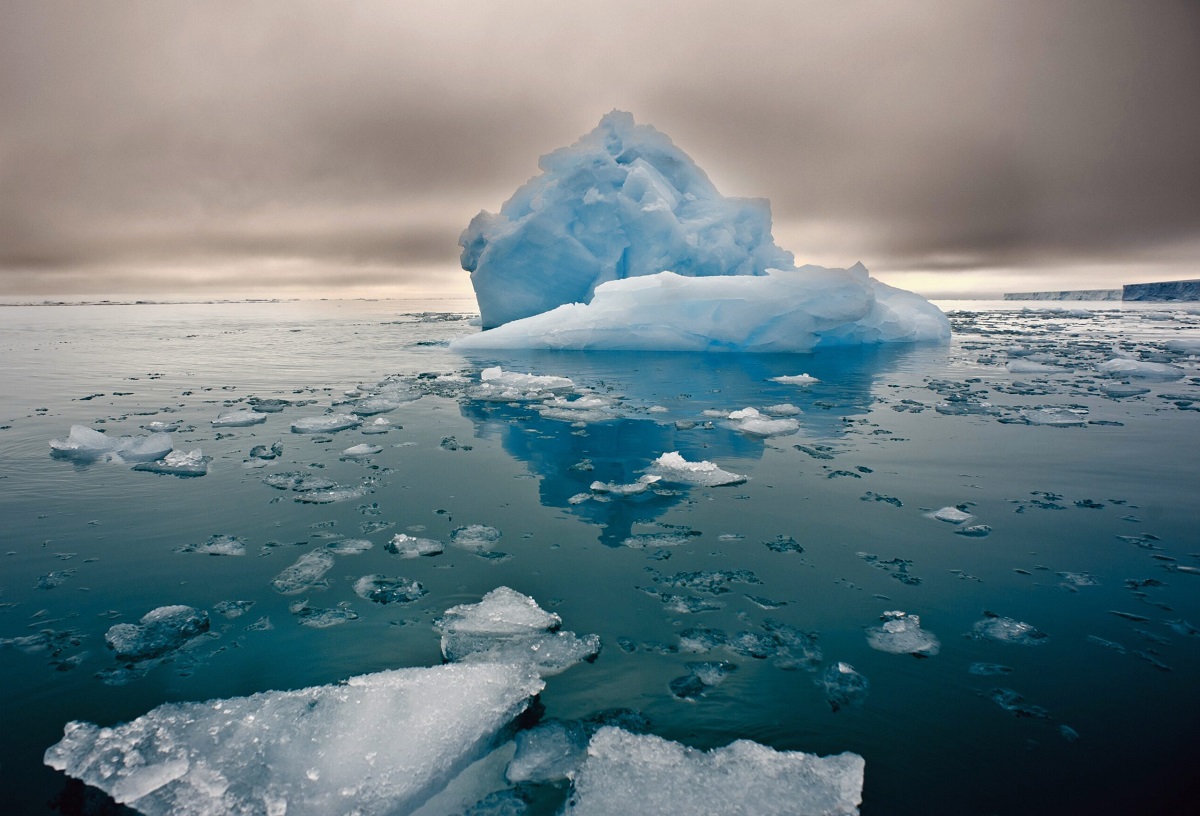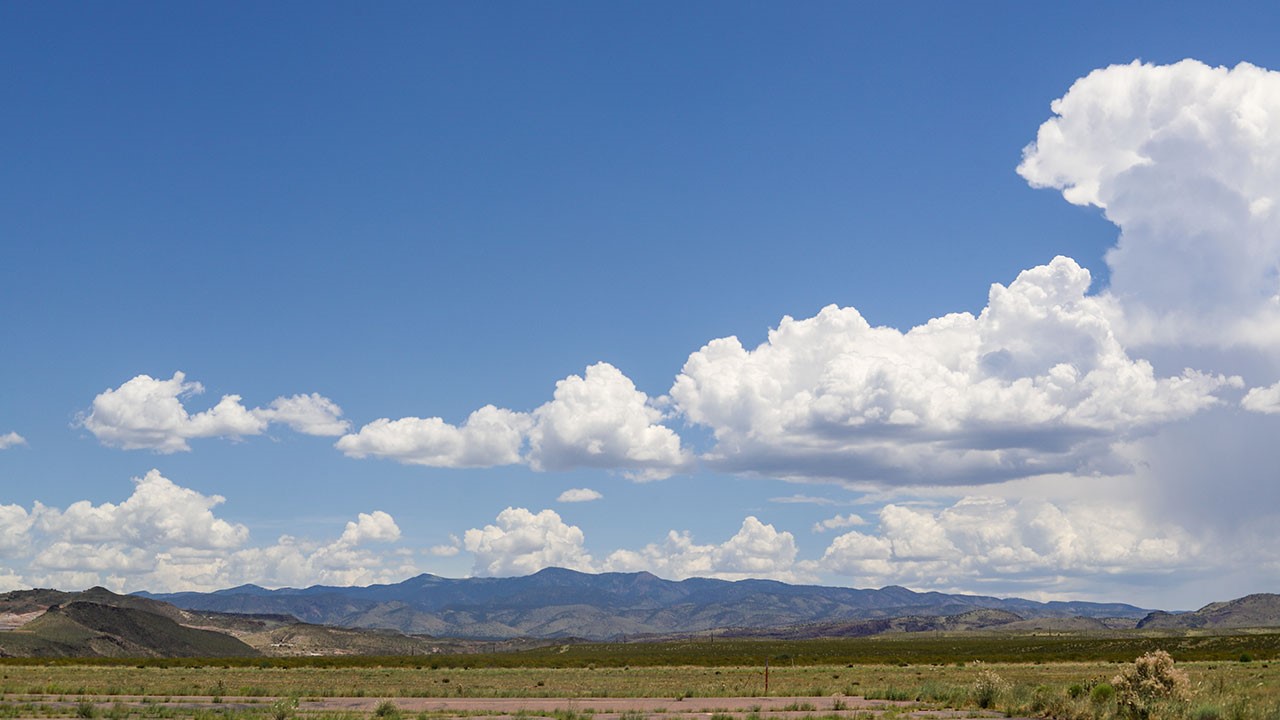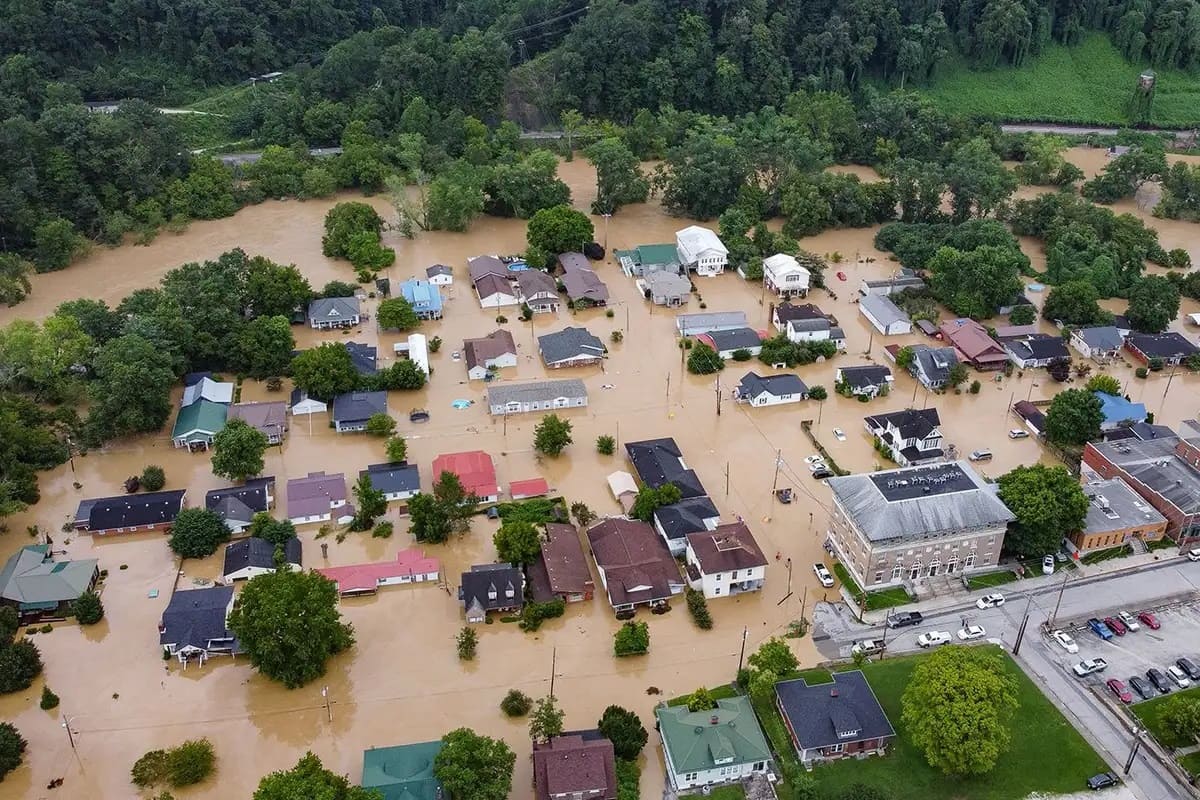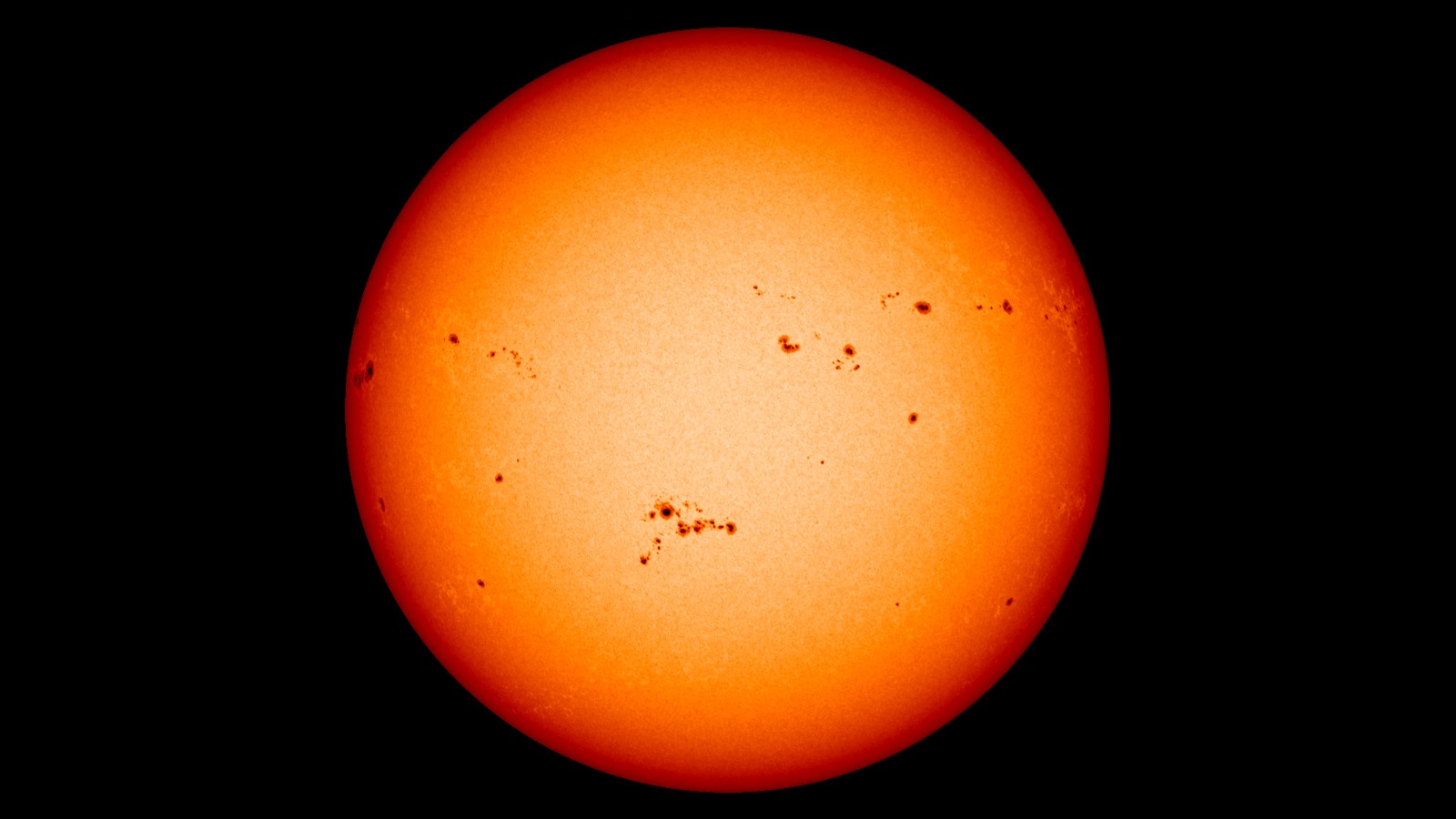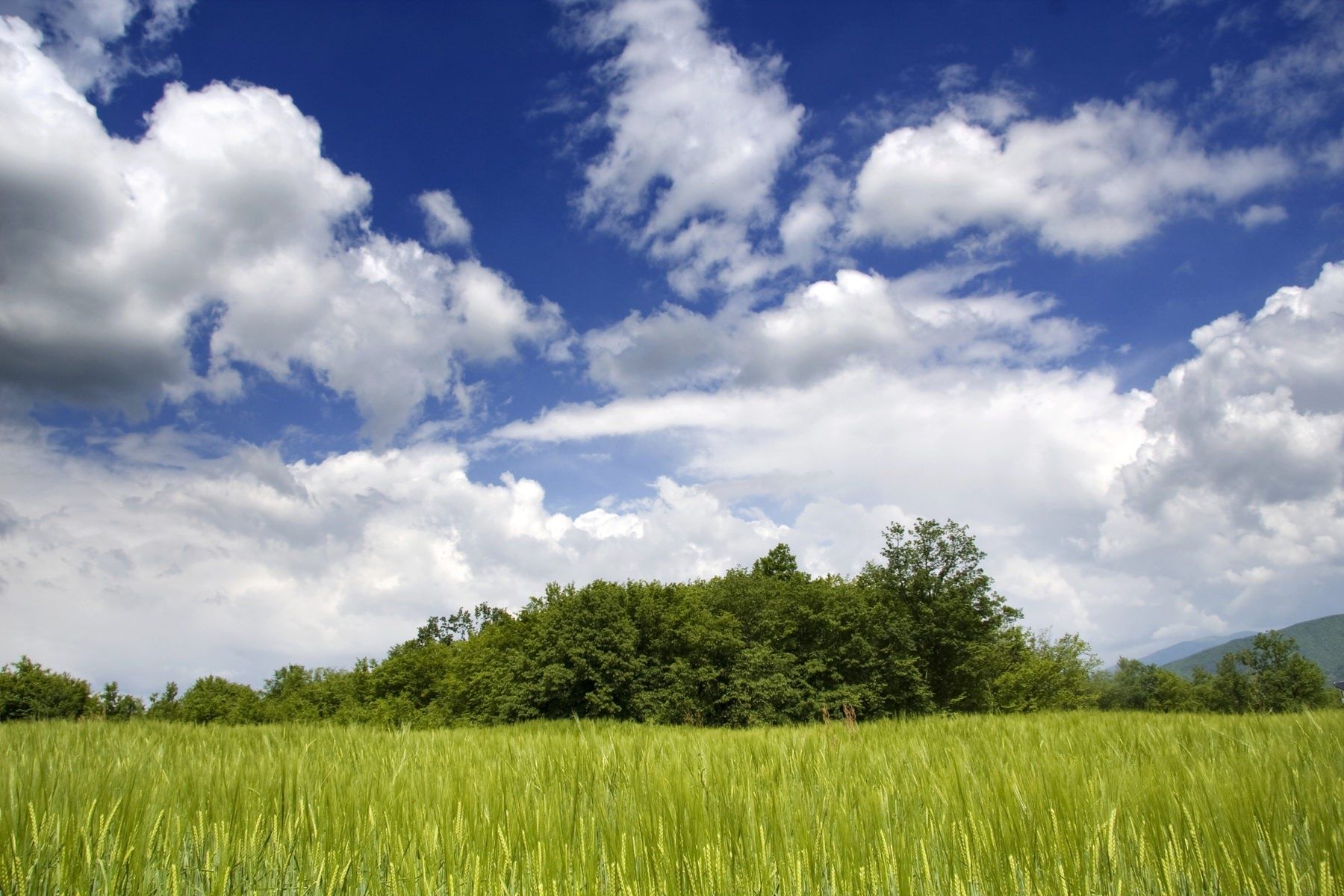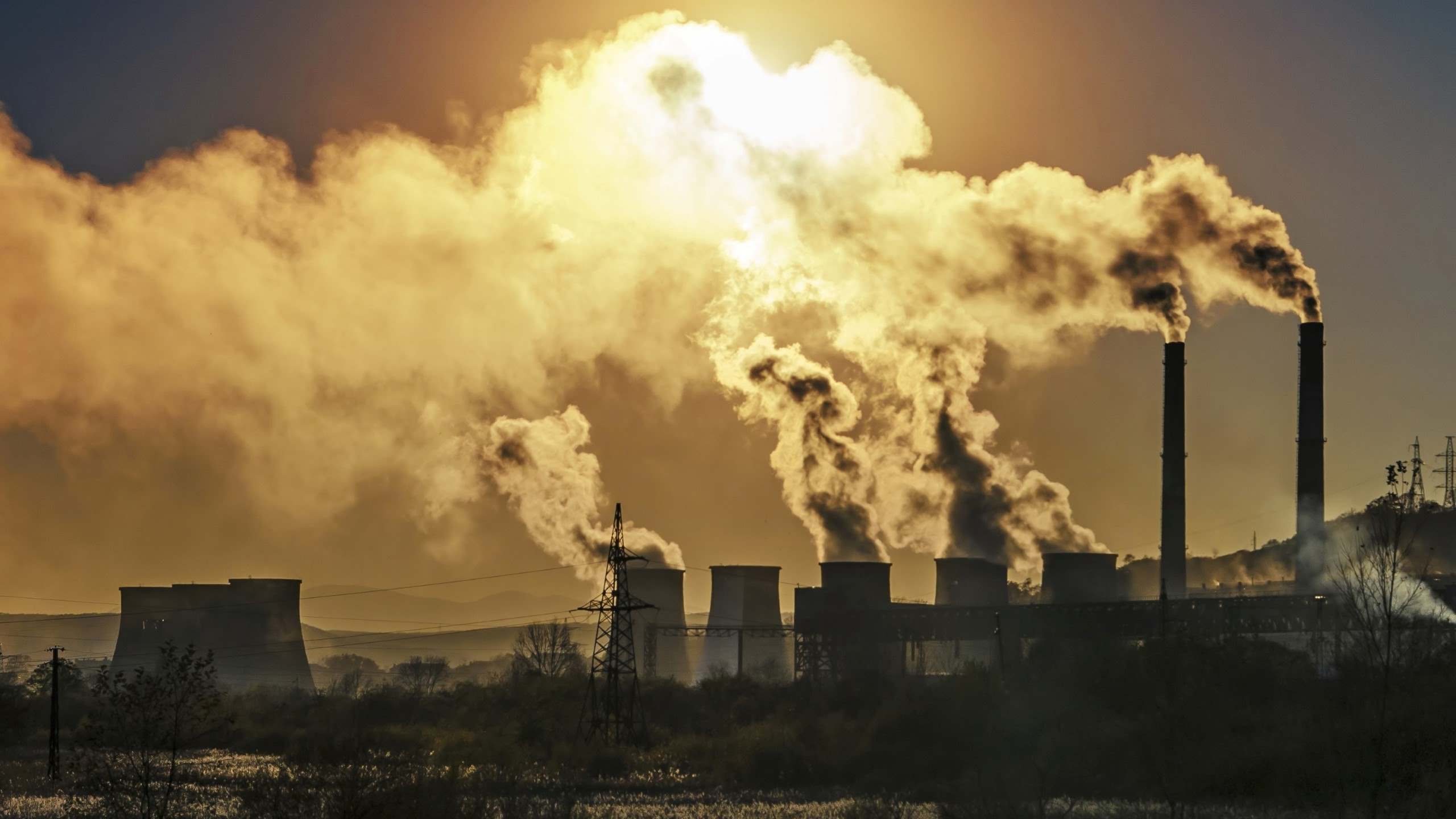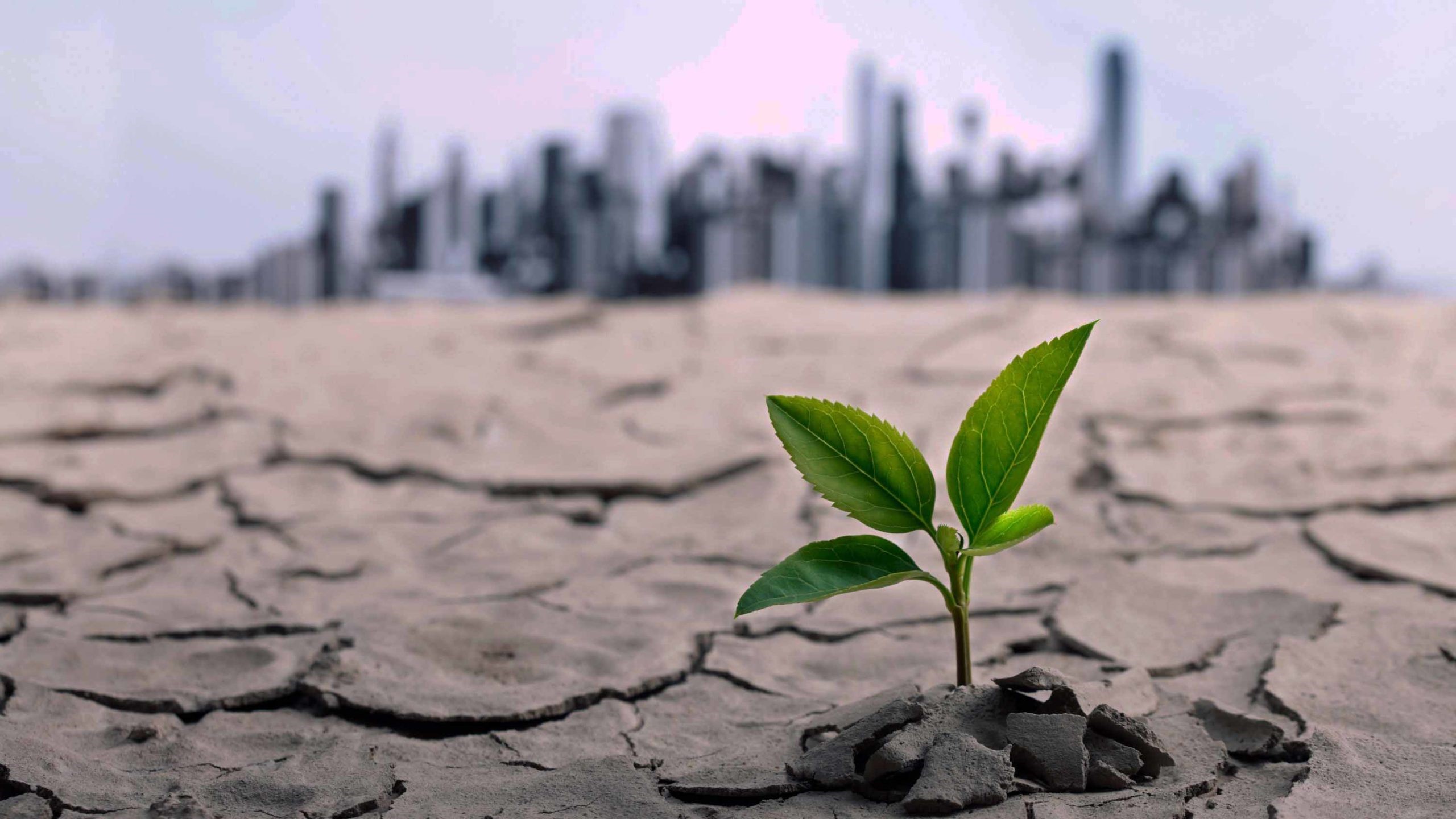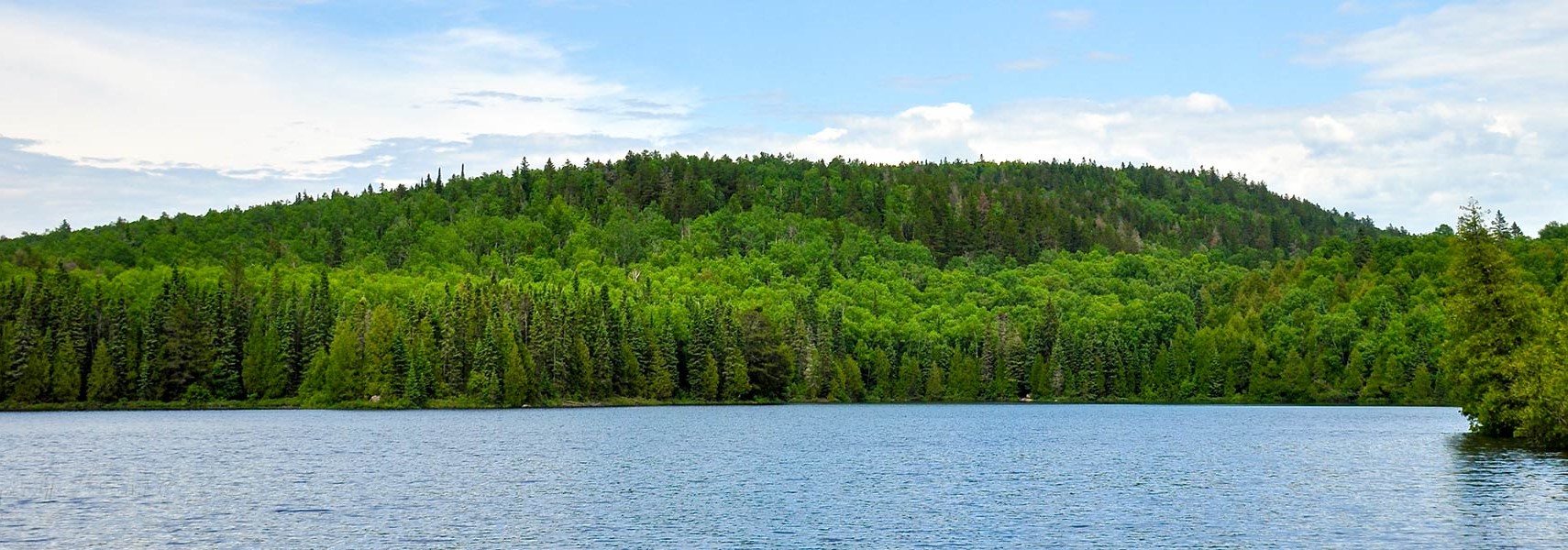Home>Weather and Climate>The Impact Of Climate On Soil Formation: Understanding The Relationship
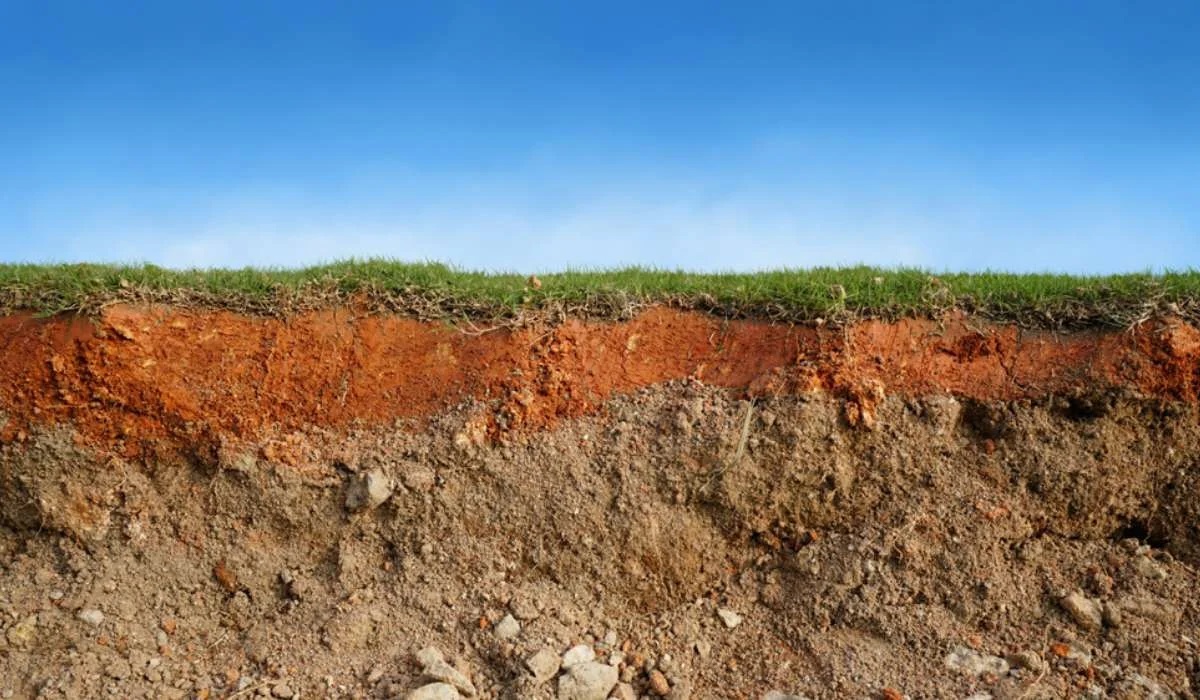

Weather and Climate
The Impact Of Climate On Soil Formation: Understanding The Relationship
Published: March 7, 2024
Explore the intricate connection between weather and climate in shaping soil formation. Gain insights into the impact of climate on soil composition and structure.
(Many of the links in this article redirect to a specific reviewed product. Your purchase of these products through affiliate links helps to generate commission for Temperatures.com, at no extra cost. Learn more)
Table of Contents
Introduction
Soil is a fundamental component of the Earth's ecosystem, playing a crucial role in supporting plant life, regulating water flow, and influencing the climate. The formation of soil is a complex process that is influenced by various factors, including parent material, topography, organisms, time, and climate. Among these factors, climate stands out as a primary driver of soil formation, exerting a profound impact on the characteristics and properties of soils around the world.
Understanding the relationship between climate and soil formation is essential for comprehending the diverse soil types found across different regions and for predicting the effects of climate change on soil ecosystems. As such, delving into the intricate interplay between climate and soil formation unveils a captivating narrative of how environmental conditions shape the very foundation of terrestrial life.
The impact of climate on soil formation is a topic of immense significance, especially in the context of ongoing climate change. By exploring this relationship, we gain valuable insights into the resilience of soils, their capacity to support agricultural productivity, and their role in mitigating the effects of climate change. As we embark on this exploration, we will uncover the intricate mechanisms through which climate influences the formation, composition, and distribution of soils, ultimately shaping the landscapes that define our planet.
Factors influencing soil formation
Soil formation is a dynamic process shaped by a myriad of factors that interact over time to create the diverse range of soils found across the globe. These factors include parent material, climate, topography, organisms, and time, each playing a crucial role in the development and characteristics of soils.
Parent Material: The geological material from which soil is formed, known as the parent material, significantly influences the properties of the resulting soil. This material can be of various types, such as bedrock, sediments, or organic deposits, and its composition directly impacts the mineral content, texture, and fertility of the soil.
Climate: Climate exerts a profound influence on soil formation, primarily through its effects on temperature, precipitation, and weathering processes. The amount and distribution of rainfall, temperature fluctuations, and the presence of freeze-thaw cycles all contribute to the physical and chemical weathering of rocks, ultimately shaping the characteristics of the resulting soil.
Topography: The physical features of the landscape, including slope, aspect, and elevation, play a pivotal role in soil formation. Slope steepness affects water drainage and erosion, while elevation influences temperature and precipitation patterns, both of which contribute to the development of distinct soil profiles.
Organisms: The presence and activity of living organisms, such as plants, animals, and microorganisms, profoundly impact soil formation. Through processes like root penetration, organic matter decomposition, and nutrient cycling, organisms contribute to the development of soil structure, fertility, and organic content.
Time: Soil formation is a time-dependent process, with soils evolving over extended periods under the influence of the aforementioned factors. The duration of weathering, deposition, and biological activity determines the degree of soil development and the establishment of unique soil characteristics.
Understanding the intricate interplay of these factors provides valuable insights into the diversity of soils worldwide and underscores the complex processes that shape the Earth's terrestrial landscapes. By delving into the multifaceted influences of parent material, climate, topography, organisms, and time, we gain a deeper appreciation for the intricate tapestry of soil formation and the profound impact it has on the functioning of ecosystems and the well-being of our planet.
The role of climate in soil formation
Climate plays a pivotal role in the intricate process of soil formation, exerting a profound influence on the physical, chemical, and biological mechanisms that shape the characteristics of soils. The key elements of climate that significantly impact soil formation include temperature, precipitation, and weathering processes.
Temperature
Temperature variations, both diurnal and seasonal, contribute to the physical and chemical weathering of rocks, a fundamental process in soil formation. In regions with significant temperature fluctuations, the expansion and contraction of rocks due to freeze-thaw cycles can lead to the breakdown of rock material, accelerating the weathering process. Additionally, high temperatures can enhance chemical weathering, as increased heat can facilitate the breakdown of minerals and the release of essential nutrients, thereby influencing the composition and fertility of the resulting soil.
Precipitation
The amount, intensity, and distribution of precipitation profoundly influence soil formation. Regions with high rainfall experience enhanced physical weathering, as water acts as a powerful agent in eroding rocks and transporting sediment. Furthermore, the leaching of minerals and nutrients from the soil profile is influenced by precipitation patterns, impacting the development of distinct soil horizons and the overall fertility of the soil. Conversely, arid regions with limited precipitation may exhibit slower rates of weathering and soil development, leading to the formation of unique soil types adapted to water scarcity.
Weathering Processes
Climate directly influences the intensity and frequency of weathering processes, such as hydration, hydrolysis, oxidation, and carbonation. These chemical reactions, driven by environmental conditions, contribute to the breakdown of minerals and rocks, ultimately shaping the composition and structure of soils. For instance, in humid tropical climates, intense chemical weathering can lead to the formation of deeply weathered, highly leached soils known as laterites, characterized by their distinct red color and low fertility.
By understanding the role of climate in soil formation, we gain valuable insights into the diverse soil types found across different climatic regions. The intricate interplay of temperature, precipitation, and weathering processes underscores the profound impact of climate on the development of soils, highlighting the dynamic relationship between environmental conditions and the formation of the Earth's terrestrial foundation.
Types of soil formed under different climates
The diverse climates found across the globe give rise to a wide array of soil types, each exhibiting unique characteristics shaped by the prevailing environmental conditions. From the icy tundras of the polar regions to the sweltering heat of tropical rainforests, the interplay of temperature, precipitation, and weathering processes engenders distinct soil formations that reflect the climatic nuances of their respective regions.
Arid and Semi-Arid Climates
In arid and semi-arid regions characterized by limited precipitation and high evaporation rates, soils often exhibit unique features adapted to water scarcity. Aridisols, commonly found in deserts, are characterized by minimal leaching and the accumulation of soluble minerals in the soil profile. Their low organic content and distinctive horizon development reflect the arid climate's influence on soil formation. Similarly, the presence of calcic horizons in these regions underscores the prevalence of calcium carbonate accumulation, a hallmark of arid and semi-arid soil development.
Temperate Climates
In temperate regions with moderate rainfall and seasonal temperature variations, the soils reflect the interplay of physical and chemical weathering processes. Alfisols, prevalent in temperate deciduous forests, exhibit well-developed horizons and a rich organic content, indicative of the favorable conditions for soil formation in these regions. The influence of temperature fluctuations and organic matter decomposition contributes to the distinctive properties of these soils, supporting diverse vegetation and agricultural productivity.
Tropical Climates
Tropical regions, characterized by high temperatures and abundant rainfall, foster the development of unique soil types shaped by intense weathering and leaching processes. Oxisols, prevalent in tropical rainforests, showcase deep weathering and leaching, resulting in highly weathered, nutrient-poor soils. Their characteristic red or yellow coloration and low fertility underscore the profound impact of the tropical climate on soil formation, highlighting the intricate relationship between environmental conditions and soil properties.
Polar Climates
In polar regions characterized by extreme cold and limited precipitation, the formation of soils is significantly influenced by permafrost and cryoturbation processes. Gelisols, found in tundra and polar environments, exhibit unique features such as permafrost and cryoturbated horizons, reflecting the pervasive influence of freezing and thawing cycles on soil development. The presence of organic-rich horizons and the dynamic nature of these soils underscore the distinct characteristics shaped by the polar climate.
By examining the diverse soil types formed under different climates, we gain a profound appreciation for the intricate relationship between environmental conditions and soil formation. The unique properties and characteristics of soils worldwide serve as a testament to the profound influence of climate on the terrestrial foundation of our planet.
Impacts of climate change on soil formation
Climate change poses significant challenges to the intricate process of soil formation, exerting profound and multifaceted impacts on the characteristics, fertility, and resilience of soils worldwide. As global temperatures rise and weather patterns become increasingly erratic, the delicate balance of environmental conditions that govern soil formation is disrupted, leading to a range of detrimental effects on soil ecosystems.
One of the primary impacts of climate change on soil formation is the alteration of precipitation patterns. Shifts in rainfall intensity, frequency, and distribution can lead to increased soil erosion, nutrient leaching, and the degradation of soil structure. Intense rainfall events can result in the loss of topsoil, diminishing soil fertility and compromising the capacity of soils to support vegetation and agricultural productivity. Conversely, prolonged droughts can lead to soil desiccation, reduced microbial activity, and the depletion of organic matter, further exacerbating the vulnerability of soils to erosion and degradation.
Furthermore, rising temperatures associated with climate change can accelerate the physical and chemical weathering of rocks, influencing the mineral composition and nutrient content of soils. Enhanced rates of weathering can lead to the depletion of essential nutrients, altering the fertility of soils and impacting their capacity to support plant growth. In addition, increased temperatures can exacerbate soil moisture loss, leading to reduced water availability for vegetation and contributing to the expansion of arid and semi-arid soil conditions.
The impacts of climate change on soil formation extend beyond physical and chemical processes to encompass the disruption of soil microbial communities and nutrient cycling. Shifts in temperature and moisture regimes can alter the composition and activity of soil microorganisms, affecting crucial processes such as organic matter decomposition, nitrogen fixation, and nutrient mineralization. These changes can have far-reaching consequences for soil fertility, ecosystem functioning, and the sustainability of agricultural systems, posing significant challenges for food security and environmental resilience.
By comprehensively understanding the impacts of climate change on soil formation, we can develop proactive strategies to mitigate these effects and enhance the resilience of soils in the face of environmental challenges. Through sustainable land management practices, conservation efforts, and climate adaptation measures, it is possible to safeguard the vital role of soils in supporting ecosystems, mitigating climate change, and sustaining the well-being of our planet.
Understanding the relationship between climate and soil formation
The intricate relationship between climate and soil formation is a cornerstone of our understanding of terrestrial ecosystems. Climate, encompassing temperature, precipitation, and weathering processes, exerts a profound influence on the development, characteristics, and distribution of soils worldwide. By delving into this relationship, we unravel the intricate mechanisms through which environmental conditions shape the very foundation of terrestrial life.
The influence of climate on soil formation is evident in the diverse range of soil types found across different climatic regions. From the arid deserts to the lush tropical rainforests, the interplay of temperature, precipitation, and weathering processes engenders distinct soil formations that reflect the climatic nuances of their respective regions. The physical and chemical weathering of rocks, driven by temperature fluctuations and precipitation patterns, contributes to the development of unique soil profiles, each bearing the imprint of the prevailing climate.
Moreover, the role of climate in shaping soil properties extends to the fertility, structure, and resilience of soils. In regions with high rainfall, intense leaching and weathering processes can lead to the formation of nutrient-poor soils, while in arid environments, the accumulation of soluble minerals and the development of calcic horizons reflect the influence of water scarcity on soil formation. These distinct soil properties directly impact the capacity of soils to support vegetation, influence agricultural productivity, and contribute to the functioning of ecosystems.
Furthermore, the relationship between climate and soil formation extends beyond the physical and chemical aspects to encompass the intricate interplay of soil organisms, nutrient cycling, and ecosystem dynamics. The presence and activity of living organisms, from microorganisms to plants, are profoundly influenced by climate, shaping the biological processes that contribute to soil development and fertility. Understanding this relationship provides valuable insights into the resilience of soils, their capacity to sequester carbon, and their role in mitigating the effects of climate change.
By comprehensively understanding the relationship between climate and soil formation, we gain a deeper appreciation for the dynamic interplay of environmental conditions and the development of soils. This understanding serves as a foundation for predicting the effects of climate change on soil ecosystems, implementing sustainable land management practices, and fostering the resilience of soils in the face of environmental challenges. Ultimately, the relationship between climate and soil formation underscores the intricate tapestry of terrestrial life, highlighting the profound impact of environmental conditions on the very foundation of our planet.
Read more: Understanding Cold Weather And Its Impact
Conclusion
In conclusion, the relationship between climate and soil formation is a captivating narrative that unveils the profound influence of environmental conditions on the terrestrial foundation of our planet. The intricate interplay of temperature, precipitation, and weathering processes shapes the characteristics, properties, and distribution of soils worldwide, giving rise to a diverse array of soil types that reflect the climatic nuances of their respective regions. From the arid deserts to the polar tundras, each soil formation bears the imprint of the prevailing climate, serving as a testament to the dynamic relationship between environmental conditions and the development of soils.
The impacts of climate change on soil formation present significant challenges, as shifts in precipitation patterns, rising temperatures, and disruptions to soil microbial communities pose threats to soil fertility, structure, and resilience. These challenges underscore the urgent need for proactive strategies to mitigate the effects of climate change on soils, safeguarding their vital role in supporting ecosystems, sustaining agricultural productivity, and mitigating the impacts of environmental change.
By comprehensively understanding the relationship between climate and soil formation, we gain valuable insights into the resilience of soils, their capacity to sequester carbon, and their role in mitigating the effects of climate change. This understanding serves as a foundation for implementing sustainable land management practices, conservation efforts, and climate adaptation measures, fostering the resilience of soils in the face of environmental challenges.
Ultimately, the intricate relationship between climate and soil formation underscores the profound impact of environmental conditions on the very foundation of our planet. As we navigate the complexities of climate change and environmental sustainability, the preservation and stewardship of soils emerge as a critical imperative, ensuring the continued functioning of terrestrial ecosystems and the well-being of future generations. Through concerted efforts to understand, protect, and enhance the resilience of soils, we can forge a path towards a sustainable and harmonious coexistence with the natural world, recognizing the invaluable role of soils as the bedrock of life on Earth.
